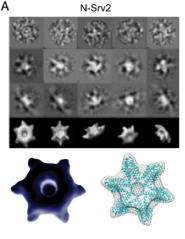 Program Will Bestow Up to $100,000 to Promising Research Proposals
Program Will Bestow Up to $100,000 to Promising Research Proposals
Could your research impact the world or do you have an idea that could create positive change? Need funding? SPROUT can help with that.
The popular SPROUT program, now in its sixth year, has announced increased funding for the 2016 round of proposals. SPROUT is funded by the Office of the Provost and run by Office of Technology Licensing. This year the Hassenfeld Family Innovation Center, recently created to support entrepreneurial and innovative collaborations happening across campus, contributed an additional $50,000 to be disbursed among the most promising requests.
Historically, the program has supported a diverse scope of lab-based innovations from all departments in the sciences including Biology, Biochemistry, Physics, and Chemistry. Past candidates have proposed projects ranging from early‐stage research and development to patent‐ready projects ranging from treatments for diseases to lab tools. Brandeis lab scientists have pitched their projects, including HIV vaccines (Sebastian Temme, Krauss lab), neuroslicers (Yasmin Escobedo Lozoya, Nelson lab) and the use of carrot fiber as an anti-diabetic (Michelle Landstrom, Hayes lab) to a panel of distinguished, outside judges. A SPROUT award can jumpstart your innovation and lead to continued opportunities. SPROUT awardees researching the use of carrot fiber as an anti-diabetic food agent were just awarded additional funding by the Massachusetts Innovation Commercialization Seed Fund program.
Other successful projects include “Enzymatic Reaction Recruits Chiral Nanoparticles to Inhibit Cancer Cells” led by Xuewen Du from the Xu lab, “Semaphorin4D: a disease‐modifying therapy for epilepsy” led by Daniel Acker of the Paradis lab, “X‐ray transparent Microfluidics for Protein Crystallization” led by Achini Opathalage from the Fraden lab and “New and Rational Catalyst Development for Green Chemistry” from the Thomas lab. Those interested in learning more about past SPROUT winners are invited to read this recent Brandeis NOW article. A list of additional winners, along with their executive summaries, is available on the Brandeis OTL website.
Teams seeking support for scientific projects which require bench research, lab space, and/or lab equipment are encouraged to submit an abstract prior to the March 7 deadline. The competition is open to the entire Brandeis community including faculty, staff, and students. The Office of Technology Licensing will conduct information sessions on Thursday, February 25th 11:30 a.m.‐12:30 p.m. in Volen 201 and on Monday, February 29th 1:00 p.m.‐2:00 p.m. at the Shapiro Science Center, 1st Floor Library. Staff will address the application process as well as specific questions and interested applicants are highly encouraged to attend.
More details regarding the SPROUT awards, process and online application may be found at bit.ly/SPROUT16.

 Program Will Bestow Up to $100,000 to Promising Research Proposals
Program Will Bestow Up to $100,000 to Promising Research Proposals





